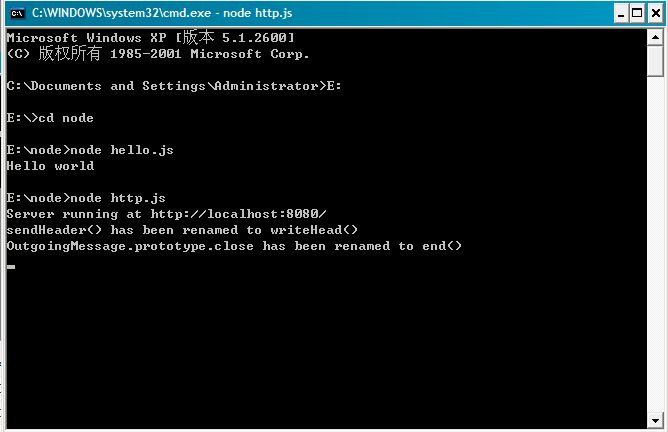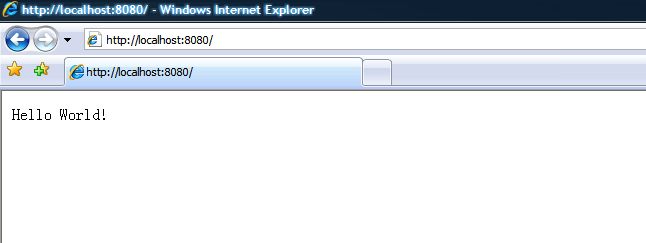服务器端的JavaScript脚本 Node.js 使用入门 |
|
本文标签:Node.js,使用入门 首先下载node.js,然后解压到E盘,改名为node,然后开始菜单输入cmd,用cd命令切换到nodejs的解压目录:  第一个例子:hello world 。 在node目录下建立hello.js文件,然后在里面输入: 复制代码 代码如下: var sys = require("sys"); sys.puts("Hello world"); 然后我们在命名台中输入命令node hello.js,就能看到命名台输出结果Hello world 。 第二个例子:hello world2 。 好了,这次我们试从游览器中输出hello world 。在node目录下建立http.js,然后输入: 复制代码 代码如下: var sys = require("sys"), http = require("http"); http.createServer(function(request, response) { response.sendHeader(200, {"Content-Type": "text/html"}); response.write("Hello World!"); response.close(); }).listen(8080); sys.puts("Server running at http://localhost:8080/"); 然后我们在命名台中输入命令node http.js,在浏览器输入http://localhost:8080/   node.js提供一个Buffer类用于转换不同编码的字符串 。目前支持三种类型:ascii,utf8与binary 。详见这里 复制代码 代码如下: var Buffer = require(buffer).Buffer, buf = new Buffer(256), len = buf.write(\u00bd + \u00bc = \u00be, 0); console.log(len + " bytes: " + buf.toString(utf8, 0, len)); 第四个例子:hello world3 。 复制代码 代码如下: //synopsis.js //synopsis 摘要, 梗概,大纲 var http = require(http); http.createServer(function (request, response) { response.writeHead(200, {Content-Type: text/plain}); response.end(Hello World\n); }).listen(8124); console.log(Server running at http://127.0.0.1:8124/); 前台地址栏:http://localhost:8124/ 第五个例子:编译C文件 复制代码 代码如下: #include #include int main(){ printf("Hello World!!!"); exit(0); } |